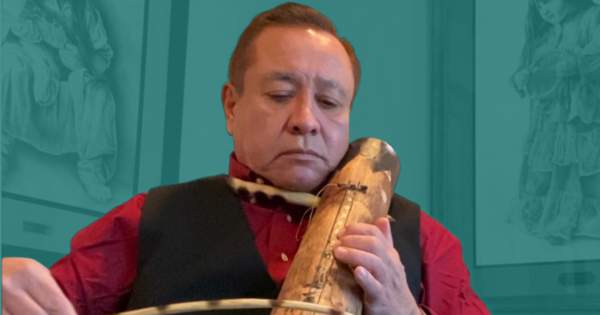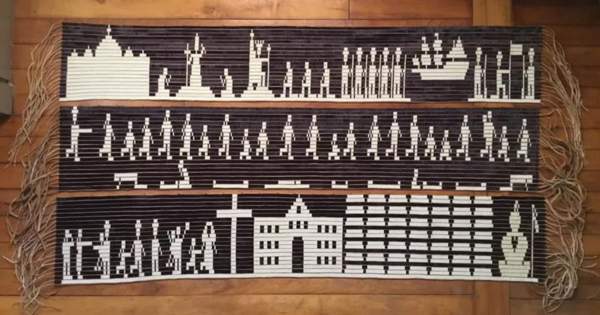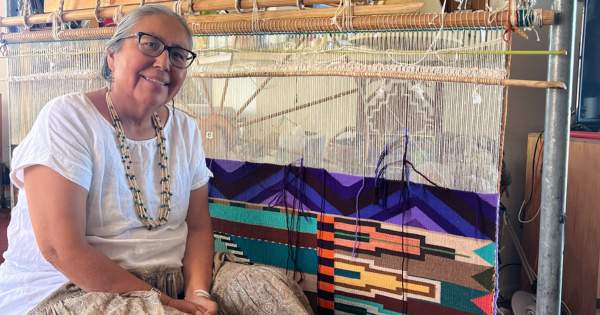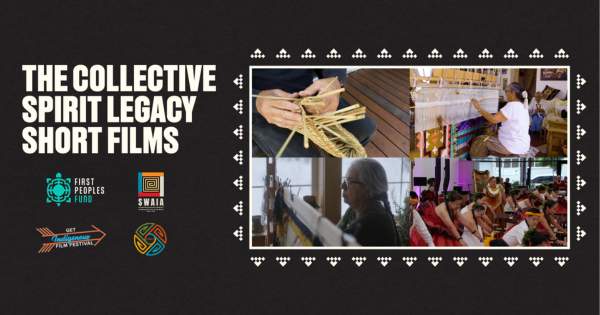
How Lakota Funds Uses Circle Banking To Serve Artists
By Sarah Elisabeth Sawyer (Choctaw), Artists in Business Leadership Fellow 2015
“When we started Lakota Funds, it was the artists who understood the Circle Banking model before anyone else. First Peoples Fund’s focus on the arts is a focus on the culture and the traditions, which are central to the survival, growth, and integrity of our Native communities. Artists are always closest to the values and the culture. They are always more likely to want to work together.”
— Gerald Sherman (Oglala Lakota), Founding Executive Director Lakota Funds, now retired from a career in banking and finance.
LAKOTA FUNDS AND THE NATIVE ARTS ECONOMY-BUILDING GRANT PROGRAM
The Circle Banking model. This idea of microloans and peer support began with the Grameen Bank, a Nobel Peace Prize winning Bangladesh model developed by Dr. Muhammad Yunus in the 1970s. It involved a cluster of women supporting one another with a pool of money, enough for one loan. When the first one paid off her loan, the next one received the loan.
That circle-thinking model translated into a foundation for the idea behind Lakota Funds. Visionary leaders in the community realized that in order to break the cycle of poverty on the Pine Ridge Indian Reservation, they needed to focus on key roadblocks to economic development: access to capital, technical assistance, business networks, and infrastructure. With assistance from Oglala Lakota College and First Nations Development Institute, Lakota Funds was established in 1986 as the first-ever Native American community development financial institution (CDFI) on a reservation. They began work to break through the roadblocks.
But Lakota Funds had a hard time finding a way into supporting the Indigenous Arts Ecosystem on Pine Ridge, the right entry point to work with Native artists, artists who represent an economic engine on the reservation. With the right kind of support, these informal, home-based art businesses are positioned for dramatic growth and the potential to impact other people beyond themselves. Artist entrepreneurship can offer a path out of poverty through innovative thinking, cultural healing, greater economic stability, and strong families and communities. Yet many artists have trouble making the connection between creating their art and running a business.
“We’ve been hesitant to work with artists, until we started working with First Peoples Fund,” says Tawney Brunsch (Oglala Lakota), executive director of Lakota Funds.
Their partnership began at the inception of First Peoples Fund when Elsie Meeks, then executive director of Lakota Funds, was a part of strategy sessions that launched First Peoples Fund in 1999 and at the time a fund under the San Francisco based Tides Foundation. With blessings from the founder, Jennifer Easton, FPF spun off in 2003 after obtaining its 501 c 3.
While First Peoples Fund has developed unique expertise in providing entrepreneurial training tailored to Native artists, Native CDFIs like Lakota Funds have the ability to provide affordable capital for Native artists who need this specialized approach. As one of our longest partnerships, Lakota Funds has worked with us for years through the Native Artist Professional Development Training program to increase the capacity of its staff to meet the needs of reservation-based artists.
In 2013, a market study, initiated in part by First Peoples Fund with another longtime partner Artspace Projects as well as Colorado State University (CSU), showed the exceptional economic development potential of supporting artists on the Pine Ridge Reservation.
The study, Establishing a Creative Economy: Art as an Economic Engine in Native Communities, demonstrated that 30% of the community’s population identifies as artists and highlighted the six things artists need access to in order to be successful: markets, supplies, credit and capital, business knowledge, informal networks and creative space.
Following the study, Lakota Funds took a close look at its role in addressing these needs, and in 2014 applied for First Peoples Fund’s then newly launched Native Arts Economy Building Grant program. (First Peoples Fund recently redesigned and renamed this the Indigenous Arts Ecology grant program.) The grant continues to build on the strong relationship between Lakota Funds and First Peoples Fund.
The NAEB grant program provided Lakota Funds the capacity to launch pre-micro loans to Native artists who had little or no collateral and no credit history. The loans, up to $500, give artists the boost they need to purchase supplies, cover travel costs to shows, and pay booth fees. When the loan is repaid, it circles out to another artist.
By integrating Lakota Funds into the flow of First Peoples Fund’s programs, tailored and targeted services such as specially designed micro-loans can be provided to support emerging artists as they develop into small-business entrepreneurs. Lakota Funds is a catalyst for long-term, systemic change on the Pine Ridge Reservation, in part through its commitment to supporting the local Indigenous Arts Ecosystem.
“Through that microloan product, we’ve had a reason to reach out to artists, really encourage them to work with us, and also taking away some of the risk concern that the Lakota Fund board had,” Tawney says. “We were able to satisfy both those criteria with this program grant.”
Along with the funding, First Peoples Fund instructed a Lakota Funds staff member in best practices for working with Native artists. Through the Train the Trainer program Jeremy Staab (Santee Dakota) worked with loan officer Yolanda Clifford (Oglala Lakota). She became a success coach for the artists Lakota Funds serves through their products. “We work with a variety of clients: retail, grocery stores, seeds stores. So working with artists is very different from what we’re used to,” Yolanda says. “Doing things like entrepreneurship training, working with artists, showing them how to properly mark up their products. It’s different.”
Because of this program, Yolanda works with artists and helps them move toward online marketing, including website building, Etsy and Facebook. Older artists tend to be uncertain about putting their information online. For ones who aren’t ready to fully expand to those markets, Lakota Funds created an artist directory where potential customers can contact them. Yolanda adds, “We’re just helping them build trust in working in these different programs, and at least giving it a try.”
Some artists are reluctant about dealing with an institution. Tawney explains, “Artists are very hesitant to work with banks. Any formal institutions are pretty scary places, honestly.”
But Lakota Funds is bridging that gap and forming relationships.
Even established artists may not keep track of all their financials to determine if they are making a profit. With coaching from Lakota Funds, they now file all their paperwork, making them eligible for other business loan products.
Still, it’s hard for many of the artists to make the trip to the branch in Kyle from wherever they are on the vast Pine Ridge Reservation. Lakota Funds was a critical partner in the creation of the Rolling Rez Arts Mobile Unit.
Now the Rolling Rez takes Lakota Funds and its partner, Lakota Federal Credit Union, to every corner of the vast reservation. This mobile unit brings the credit union to artists, connecting many of them to online markets and banking options for the first time. The Lakota Federal Credit Union (LFCU), originally sponsored by Lakota Funds, goes out on the Rolling Rez Arts monthly, offering their full suite of services and always ready to open first-time savings accounts or deposit checks. Launched in 2012, the LFCU is the only federally insured financial institution serving the Pine Ridge Reservation, which spans over 2 million acres. Its membership is already over 2,000, and growing rapidly.
“Partially due to the work we’re doing on the Rolling Rez Arts, we have a bigger presence now across Pine Ridge,” says Tawney, who also serves as the board chair for the Lakota Federal Credit Union. “It’s usually by word of mouth that news of products gets out to anyone.”
Native artists are taking advantage of the pre-micro loans. One artist needed equipment to begin screen printing custom designs. Other artists use the loans to purchase materials like beads and rawhide.
Word is spreading about this opportunity for artists. They are experiencing success, and now more are coming to Lakota Funds for guidance, propelling the program forward.
“There’s just a lot of potential,” Tawney says. “We look forward to doing really impactful things for the community here in the future.”
As First Peoples Fund’s long-standing partnership with Lakota Funds strengthens through the grant program and Rolling Rez Arts, we are establishing a model for building thriving creative economies — and the larger Indigenous Arts Ecology — in tribal communities across sectors.










































































































